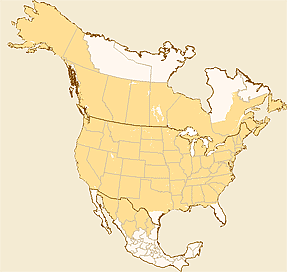Mourning Cloak
Common Name: Mourning Cloak.
Scientific Name: Nymphalis Antiopa.
What to look for? Mourning Cloak is a large, very dark butterfly. All of spring-active butterflies have dark colored bodies and wings to absorb the sun’s warmth – “solar heating”. The irregularly bordered wings almost look torn. The wings may be colored differently on the upper-side and the under-side. The upper-side is purple-black with a wide, bright yellow border on outer margins. There is also a row of iridescent blue spots at the inner edge of the border. The under-side of the wings is black - resembling charred wood and with a whitish-yellow band on the margin.
Where can they be found at Carillon Stonegate Pond? The Mourning Cloak will be one of the first butterflies that appear and will usually be found here from May to July. Look for them around trees.
How big are they? The Mourning Cloak averages one to two inches in length. And their wingspan is approximately three to four inches. The Mourning Cloak as a caterpillar can grow to nearly two inches in length.
What are their flight patterns? The Mourning Cloak is known for its graceful gliding behavior. Males perch and fly out to defend territories and to meet females.
How else do they behave? When they feed on tree sap, Mourning Cloaks walk down the trunk and feed with their head downward. With its wings folded while at rest on a tree, it is well camouflaged from predators. The Mourning Cloak caterpillar feeds in groups on the leaves of trees.
What’s for dinner? Butterflies and moths have a different diet during their larval caterpillar phase than they do as winged adults. Adult Mourning Cloaks prefer tree sap, especially that of oaks. They will also feed on rotting fruit or occasionally on flower nectar. The preferred plant hosts for larvae are primarily trees such as willows and also poplars.
Where do they take up residence? The Mourning Cloak resides in North America from the mid-north (tundra line) of Canada and Alaska, through most of the U.S., and south into central Mexico. It is usually not found in the southern regions of Texas, Florida, and Louisiana. They are found almost anywhere that host plants occur including woods, openings, parks, and suburbs, especially around water.
When and where do they breed and nest? Remember the lifecycle of a butterfly: (1) eggs, (2) larval state as caterpillar, (3) pupa state in chrysalis or cocoon, and (4) butterfly. The lifespan of an adult butterfly is only about twelve months. Mourning Cloaks mate in early spring. The female Mourning Cloak lays pale yellow eggs in clusters on tree twigs. The eggs are usually laid on host trees like willow, elm, hackberry, cottonwood, poplar, rose, birch, hawthorne, and mulberry. When the caterpillars hatch, they eat the leaves of the host plant. The caterpillars pupate and emerge as butterflies in June or July. The adult butterflies hibernate in the winter before emerging to mate in the spring.
Where do they migrate? Most do not migrate. The Mourning Cloak hibernates as an adult – actually twice a year! After feeding briefly, the adults “estivate” (summer equivalent of hibernate) until fall, when they re-emerge to feed and store energy for hibernation. The Mourning Cloak hibernates in hollow logs, loose tree bark and tree holes. They may even be found under the eaves of houses.
Do they make any interesting sounds? No.
Interesting Facts About the Mourning Cloak:
-
The lifespan of a Mourning Cloak butterfly is approximately one year.
-
During this lifespan, a Mourning Cloak may hibernate twice.
-
Apparently acting is a skill as Mourning Cloak may fake death if attacked by predators.
-
When it is at rest on a tree with its wings folded, a Mourning Cloak is perfectly camouflaged!
-
The common name, Mourning Cloak, refers to its resemblance to a traditional cloak worn when one was "in mourning".
For more information on the Mourning Cloak and sources of information used in this blog (these are the several of the sources that I am using to learn as I blog), please visit Butterflies and Moths of North America, University of Illinois Prairie Research Institute, University of Michigan’s Animal Diversity Web, and University of Florida’s Featured Creatures.
The Carillon at Stonegate community is very fortunate to have a variety of wetland, forest and prairie environments conducive to a variety of birds and other wildlife, insects and plants. Our community and the Kane County Forest Preserve do an exceptional job in maintaining this natural environment – both for the benefit of the birds and wildlife and for our residents to enjoy.
Take a hike and see what you can find – and identify!


